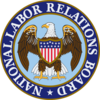Conduct Elections
If you wish to form or join a union, or decertify an existing union, you may file an election petition. Review the steps for filing a petition here. Please contact an information officer at your nearest Regional Office for assistance.
To start the election process, a petition and associated documents must be filed, preferably electronically, with the nearest NLRB Regional Office showing support for the petition from at least 30% of employees. NLRB agents will then investigate to make sure the Board has jurisdiction, the union is qualified, and there are no existing labor contracts or recent elections that would bar an election. Shortly after the petition is filed, the employer is required to post a Notice of Petition for Election in conspicuous places, including all places where notices to employees are customarily posted. If the employer customarily communicates with employees in the petitioned-for unit through electronic means, the employer must also distribute the Notice of Petition for Election electronically to those employees.
The NLRB agents will seek an election agreement between the employer, union, and other parties setting the date, time, and place for balloting, the ballot language(s), the appropriate unit, and a method to determine who is eligible to vote. Once an agreement is reached, the parties authorize the NLRB Regional Director to conduct the election. If no agreement is reached, the Regional Director will hold a hearing and then may order an election and set the conditions in accordance with the Board's rules and its decisions.
Typically, elections are held on the earliest practicable date after a Director's order or authorization, which will vary from case to case. However, an election may be postponed if a party requests to block the petition based on charges alleging conduct that would interfere with employee free choice in the election, such as threatening loss of jobs or benefits by an employer or a union, granting promotions, pay raises, or other benefits to influence the vote. When an election is scheduled, the Employer is required to post a Notice of Election which will replace the previously posted Notice of Petition for Election.
When a union is already in place, a competing union may file an election petition if the labor contract has expired or is about to expire, and it can show interest by at least 30% of the employees. This would normally result in a three-way election, with the choices being the incumbent labor union, the challenging one, and "none." If none of the three receives a majority vote, a runoff will be conducted between the top two vote-getters.
Elections to certify or decertify a union as the bargaining representative of a unit of employees are decided by a majority of votes cast. Observers from all parties may choose to be present when ballots are counted. Any party may file objections and an offer of proof in support of its objections with the appropriate Regional Director within 7 days of the vote count. In turn, except where the parties have agreed otherwise, the Regional Director's ruling on objections may be appealed to the Board in Washington. Results of an election will be set aside if conduct by the employer or the union created an atmosphere of confusion or fear of reprisals and thus interfered with the employees' freedom of choice.
Otherwise, a union that receives a majority of the votes cast is certified as the employees' bargaining representative and is entitled to be recognized by the employer as the exclusive bargaining agent for the employees in the unit. Failure to bargain with the union at this point is an unfair labor practice.
Click here for charts and data on representation elections.
Alternate path to union representation
In addition to NLRB-conducted elections, federal law provides employees a second path to choose a representative: They may persuade an employer to voluntarily recognize a union after showing majority support by signed authorization cards or other means. These agreements are made outside the NLRB process. If a union is voluntarily recognized, its status as bargaining representative cannot be challenged during a reasonable period for bargaining, which the Board defines as not less than six months (and not more than one year) after the parties’ first bargaining session. In other words, during that reasonable period, the employer cannot withdraw recognition, and the Board will not process a petition for an election to remove the union or replace it with a different union. However, for the election-petition bar to apply, the employer and/or union must first notify a Board Regional Office that voluntary recognition has been granted; the employer must post and distribute to employees a notice informing employees that recognition has been granted and that they have a right to file a petition during a 45-day period beginning on the date the notice is posted; and no properly supported petition is filed within those 45 days.
Office of Representation Appeals
Reviews of election-related decisions, including dismissals of petitions and pre-election decisions by Regional Directors, are handled by the Office of Representation Appeals in Washington, D.C. Requests for review c an be filed at any time up to 14 days after a certification of representation or the results of an election or a dismissal of the petition. Each case is assigned to an attorney and a supervisor for a review of the case, which is then presented to the Board. The Board may deny review or grant review of the decision. If the Board grants review, the parties may file additional briefs on review.
For a list of all NLRB elections by month, please see our Election Reports.
For further information or for help in filing a petition, please contact an information officer at your nearest NLRB office.


